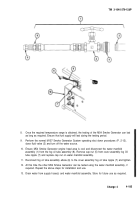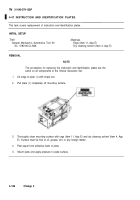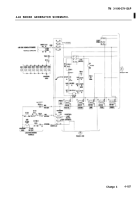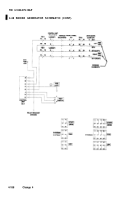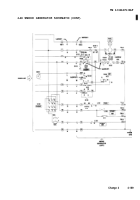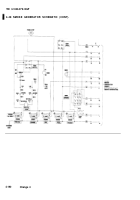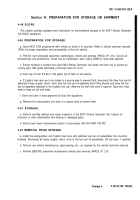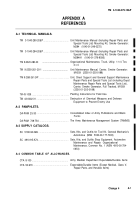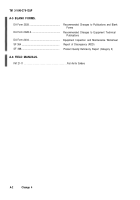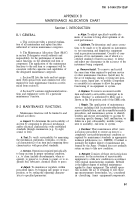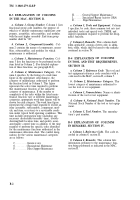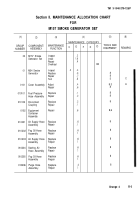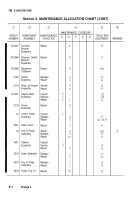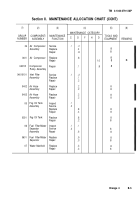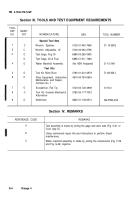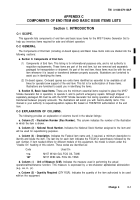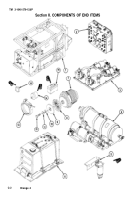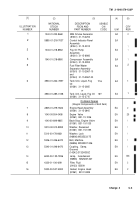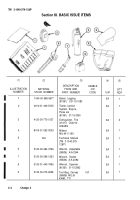TM-3-1040-279-12-P - Page 263 of 389
TM 3-1040-279-12&P
APPENDIX B
MAINTENANCE ALLOCATION CHART
Section I. INTRODUCTION
B-1 GENERAL.
a. This section provides a general explana-
tion of all maintenance and repair functions
authorized at various maintenance categories.
b. The Maintenance Allocation Chart (MAC)
in section II designates overall authority and
responsibility for the performance of mainte-
nance functions on the identified end item or
component. The application of the maintenance
functions to the end item or component will be
consistent with the capacities and capabilities of
the designated maintenance categories.
c. Section III lists the tools and test equip-
ment (both special tools and common tool sets)
required for each maintenance function as refer-
enced from section II.
d. Section IV contains supplemental instruc-
tions and explanatory notes for a particular
maintenance function.
B-2 MAINTENANCE FUNCTIONS.
Maintenance functions will be limited to and
defined as follows:
a. Inspect.
To determine the serviceability of
an item by comparing its physical, mechanical,
and/or electrical characteristics with established
standards through examination (e.g., by sight,
sound, or feel).
b. Test.
To verify serviceability by measuring
the mechanical, pneumatic, hydraulic, or electri-
cal characteristics of an item and comparing those
characteristics with prescribed standards.
c. Service.
Operations required periodically
to keep an item in proper operating condition,
i.e., to clean (include decontaminate, when re-
quired), to preserve, to drain, to paint, or to re-
plenish fuel, lubricants, chemical fluids, or gases.
d. Adjust.
To maintain or regulate, within
prescribed limits, by bringing into proper or exact
position, or by setting the operating character-
istics to specified parameters.
e. Align.
To adjust specified variable ele-
ments of an item to bring about optimum or de-
sired performance.
f. Calibrate.
To
determine and cause correc-
tions to be made or to be adjusted on instruments
or, test measuring, and diagnostics equipment
used in precision measurement. Consists of com-
parisons of two instruments, one of which is a
certified standard of known accuracy, to detect
and adjust any discrepancy in the accuracy of the
instrument being compared.
g. Remove/Install.
To remove and install
the same item when required to perform service
or other maintenance functions. Install may be
the act of emplacing, seating, or fixing into posi-
tion a spare, repair part, or module (component
or assembly) in a manner to allow the proper
functioning of an equipment or system.
h. Replace.
To remove an unserviceable
item and install a serviceable counterpart in its
place. “Replace” is authorized by MAC and is
shown as the 3rd position code of the SMR code.
i. Repair.
The application of maintenance
services including fault location/troubleshooting,
removal/installation, and disassembly/assembly
procedures, and maintenance actions to identify
troubles and restore serviceability to an item by
correcting specific damage, fault, malfunction, or
failure in a part, subassembly, module (compo-
nent or assembly), end item, or system.
j. Overhaul.
That maintenance effort (serv-
ice/action) prescribed to restore an item to a
completely serviceable/operational condition as
required by maintenance standards in appropriate
technical publications (i.e., DMWR). Overhaul is
normally the highest degree of maintenance per-
formed by the Army. Overhaul does not normally
return an item to like new condition.
k. Rebuild.
Consists of those services/actions
necessary for the restoration of unserviceable
equipment to a like new condition in accordance
with original manufacturing standards. Rebuild
is the highest degree of material maintenance
applied to Army equipment. The rebuild opera-
tion includes the act of returning to zero those
age measurements (hours/miles, etc.) considered
in classifying Army equipment/components.
B-1
Back to Top

